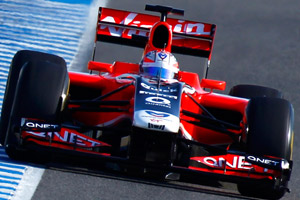Unless you use brute computing force. One can just code boundary conditions based on rules and track data and iterate, changing shape of the car one step at a time and simulating a lap, until optimal solution is found.bot6 wrote:At the end of the day, it's not about weird holes in the rules. It's about having the right global design concept, and having a "feel" for how the flow bends and where it goes. That just comes with years of experience and some talent to start with.
Wind tunnels and CFD can only be used to check the validity of a given solution. They can't design the solution for you from scratch. That's the creative bit of the engineer's brain's job. And that's the beauty of it.
There is only one problem - we are now at 10*10^15 Flops (IBM's Blue Gen), and we need about 10^15 computing clusters of this size to be able to finish our calculations the same year we started. And 10^30 bytes of disk space to keep the data.
AFAIK teams are allowed to use computing clusters of about 40*10^12 Flops (about 1000 times slower then blue gen)...




